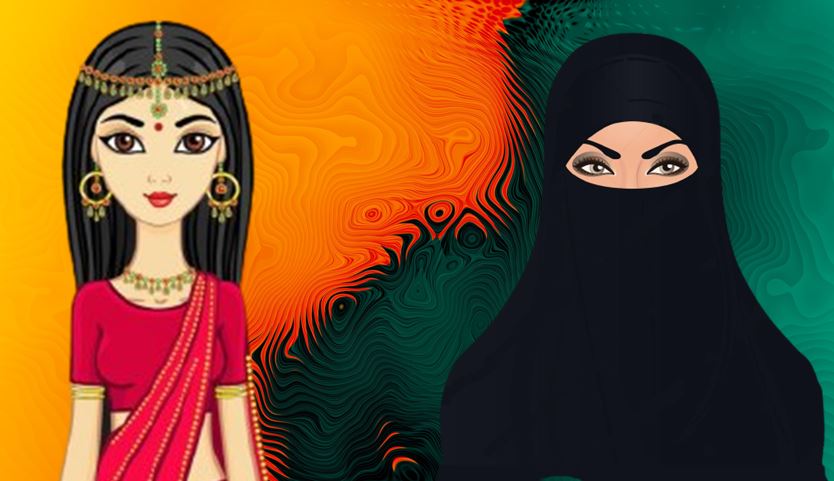Recently, Allahabad High Court formally asked the Narendra Modi-led central government to speed up the process of implementation of the much-awaited uniform civil code (UCC) in the country. As the debate around UCC will widen, Indian left-liberals are trying to draw a parallel between thousands of years old Hindu practices and barely a few centuries-old practices of other religions.
One of those comparisons will be between Niyoga (now non-existent but erstwhile duty-driven practice) and Halala, a practice based on pure lust.
Niyoga: An exception made in the wake of tragedy
Niyoga was a practice that was allowed by ancient Hindu society to make sure that every woman experiences the pious feeling of becoming a mother during her lifetime.
Simply put, if a man failed in his responsibility to impregnate his wife, then-wife could seek permission from her husband to get impregnated by someone else. An exception was also made if the man died without becoming a father. Since humans are not perfect and Hindus know it from the beginning of time, various restrictions were laid to curtail the misuse of Niyoga.
- The first and foremost rule of Niyoga is that both man and the lady practicing it had to agree on the fact that they will be doing it only for the sake of child-bearing.
- The person to be selected for Niyoga had to be well-mannered, well-educated, and should either be Sadhu or have Sadhu-like characteristics.
- To curtail any chances of carnal pleasure developing between both persons, they were required to use a paste specially prepared from Ghee before the Niyoga procedure.
- In spite of the procedures adopted, if the man or the woman in question ever develop any carnal or emotionally pleasurable feeling towards their counterpart, it was considered a sin.
- A particular man was allowed to do Niyoga only thrice in his life.
- After the lady was impregnated, the man and the lady were not allowed to ever have even minuscule level skin-to-skin contact.
- The man could not impose his ownership on the child born from the Niyoga. He also did not have any right to be in touch with the child born from Niyoga.
A detailed history of Niyoga in Sanatana Dharma
In infinitesimal Sanatan culture, various instances of Niyoga have been recorded. Mahabharata describes the practice of Niyoga in broad ways. When Satyavati’s younger son Vichitravirya died, she insisted that her eldest son Rishi Vyasa perform Niyoga with Ambika and Ambalika, the two widows of Vichitravirya. Dhritarashtra, Pandu, and Vidura were born through Niyoga only. Right from his birth, Pandu was also incapable of becoming a father, so it is also widely believed that all 5 Pandavas were born with Niyoga.
When Sadhu Dirghatamas was thrown by his enemies to die in a stream, a King called Bali had rescued him. However, in return for saving his life, Raja Bali asked Dirghatamas to give him a son by doing Niyoga with his wife, Queen Sudeshna through the prescribed ritual. Manusmriti provides a detailed description of rules and procedures to be followed for Niyoga.
Halala: A tool to subjugate women
Halala on the other hand is totally different. In Islam, a man can easily divorce his wife. Once, he has divorced his wife, the lady is so much subjugated by the oppressive Muslim patriarchy that after the divorce by her husband, she becomes haram (unlawful and therefore, prohibited).
Now, if the man wants to remarry her at some other point in life, the woman will have to become ‘halal’, which means something permissible. The question is how will she become permissible to marry?
Read more: Woman fighting against Nikah Halala and Polygamy gets rape threats from radical elements
Islamists have put in yet another rule here to subjugate women. The rules prescribe that first, the woman will have to marry another Muslim man, have sexual intercourse with him, only then she will be able to re-marry her former husband.
Over the years, this practice has become a tool for Maulvis to fulfill their sexual desires. Paid services are available on the internet which offers lustful men to the poor and divorced Muslim women.
Read more: Paid Sex, Maulvis, Money, Abuse of Women: What goes in the name of Nikaah Halala!
The fundamental difference between Niyoga and Halala
- Niyoga was briefly permissible for bearing a child, while Halala somehow conveys that a woman can be pure for her husband, only when she has sex with another man.
- There is no compulsion on the man performing Halala with the woman to divorce her after using her for his sexual pleasures, while in Niyoga, the man does not have a right to be in contact with her.
In spite of having so many differences in letters as well as procedures, a major section of left-liberal intelligentsia treats both in the same manner. They look at it from one angle only, and that is of a woman having sex with a man other than her husband. This kind of thinking convolutes thought but is also an indirect admission of the person’s leaning towards animalistic sexual pleasures. The way an intellectual perceives history is an indication of where his/her interests lie at the current juncture of time. People should refrain away from these crooked and hippie versions of Sanatani civilization.
